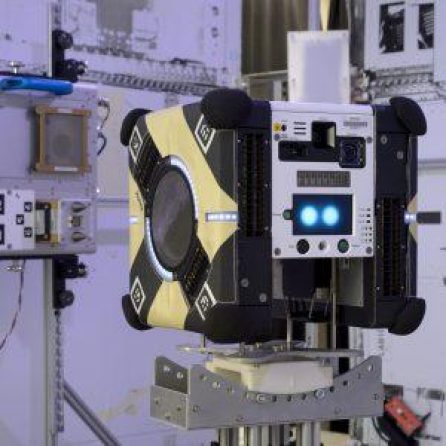Astrobee

The Astrobee is a robotic free-flying system developed by NASA with the goal to help astronauts reduce time on routine tasks. The ARCLab is currently working to build and test an Astrobee and run 3 DOF simulations on a vacuum table to prove capability. The work includes soldering components on PCBs, sourcing parts, selecting materials for cheaper manufacturing while maintaining tolerances and function, 3D-printing, machining, assembly, and testing. Once built, the ARCLab Astrobee will serve as a testbed to develop, refine, and test controllers and algorithms.
Image: Bryce Doerr / MIT
ARCLab is using Astrobee as a robotic autonomy testbed for algorithms that will broaden the scope of tasks that microgravity robots (free-flyers) can reliably undertake. Using the Astrobee simulation environment, ARCLab is demonstrating future free-flyer capabilities including autonomous rendezvous with tumbling targets, robust on-orbit assembly, and automated space station cargo repositioning. The scope of algorithms in use spans computer vision-based SLAM, robust model predictive control, and efficient forms of online motion planning like LQR-RRT*. The wide-ranging set of robotics tools being developed for ARCLab’s Astrobee research are bringing cutting-edge advances in robotics to the space domain with practical application on the Astrobee hardware; multiple tests using the Astrobee robots at NASA Ames and on the International Space Station are underway. Following MIT’s heritage with the SPHERES satellites, the ARCLab’s Astrobee team is enabling the practical use of intelligent, autonomous on-orbit robots.
Image: Keenan Albee / MIT
